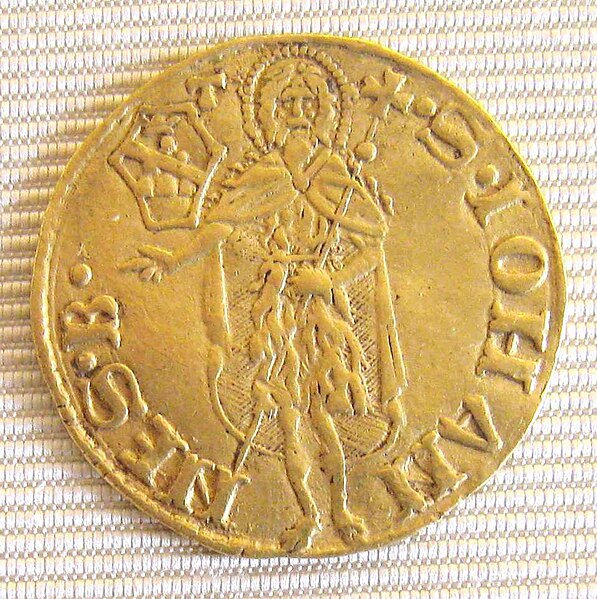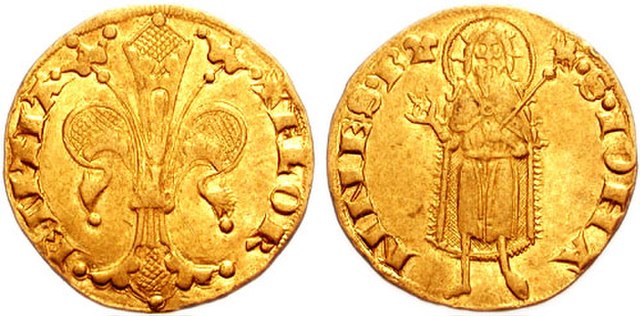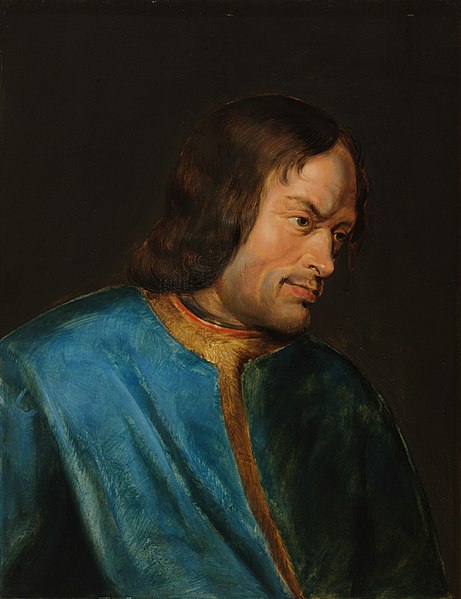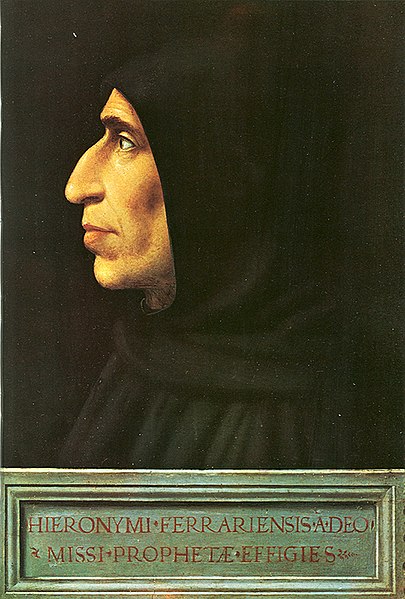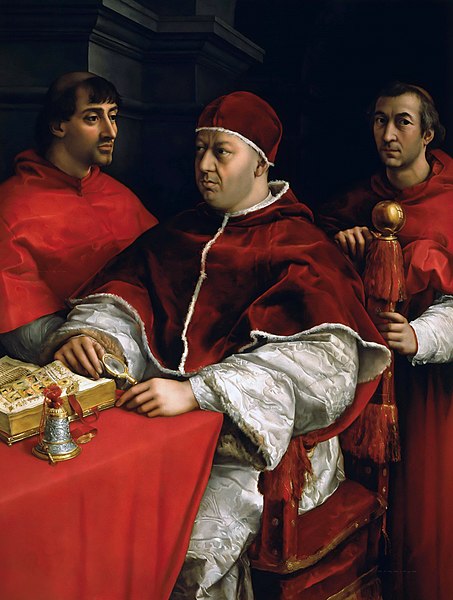The Florentine florin was a gold coin struck from 1252 to 1533 with no significant change in its design or metal content standard during that time. It had 54 grains of nominally pure or 'fine' gold with a purchasing power difficult to estimate but ranging according to social grouping and perspective from approximately 140 to 1,000 modern US dollars. The name of the coin comes from the Giglio bottonato, the floral emblem of the city, which is represented at the head of the coin.
The back of an Italian florin coin
Florin from the Środa treasure
Gold florin or "Beiersgulden", struck in Holland under John of Bavaria
Gold florin or "Philippus goudgulden", struck in Dordrecht under Philip the Fair
The Republic of Florence, known officially as the Florentine Republic, was a medieval and early modern state that was centered on the Italian city of Florence in Tuscany, Italy. The republic originated in 1115, when the Florentine people rebelled against the Margraviate of Tuscany upon the death of Matilda of Tuscany, who controlled vast territories that included Florence. The Florentines formed a commune in her successors' place. The republic was ruled by a council known as the Signoria of Florence. The signoria was chosen by the gonfaloniere, who was elected every two months by Florentine guild members.
Front and back of a Florentine florin
Lorenzo de' Medici
Girolamo Savonarola
Leo X (center) and Cardinal Giulio de' Medici (left)

